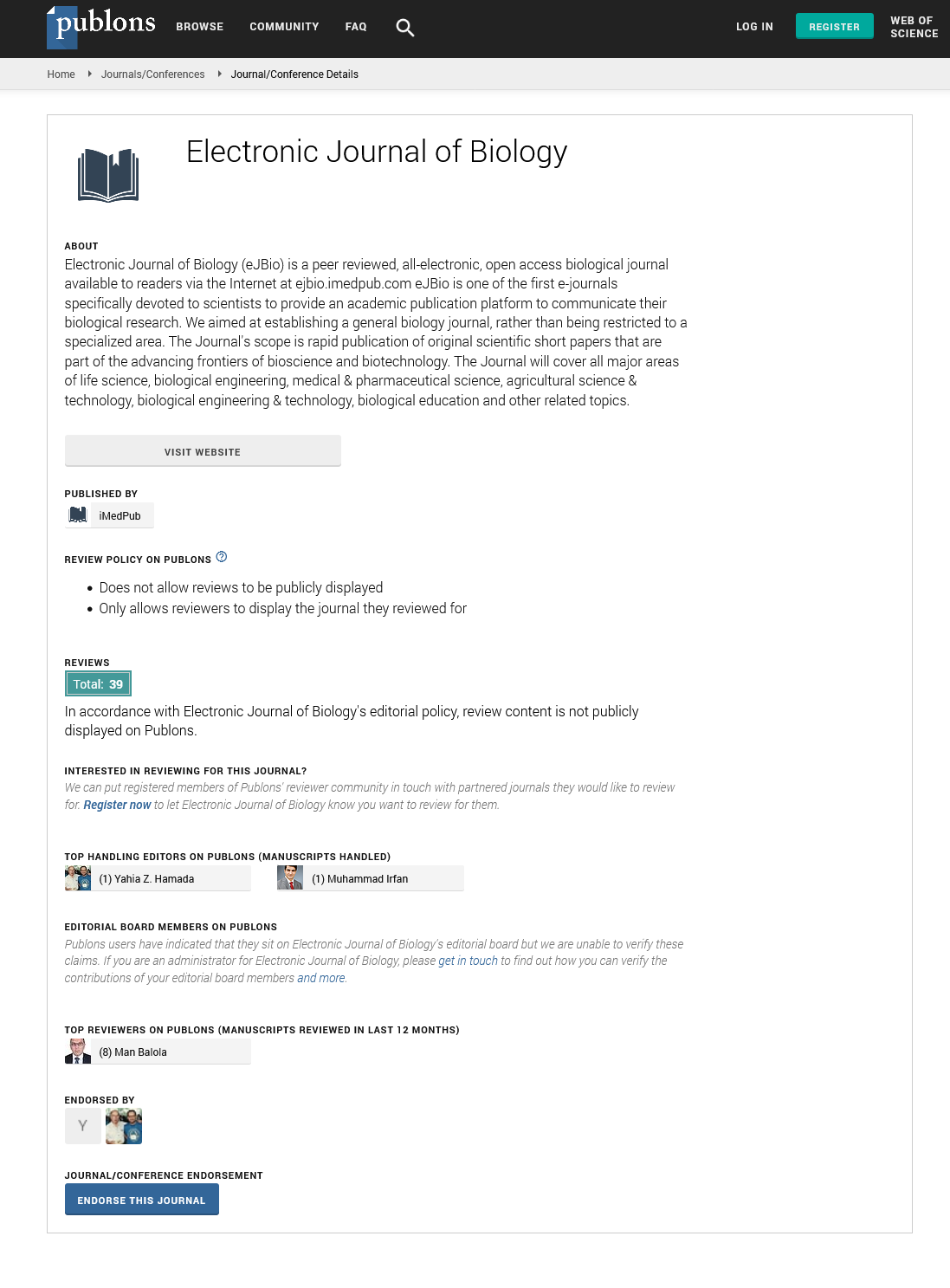Abstract
Occurrence of Plasmodium falciparum Malaria Associated with ABO Blood Group in Darazo, Bauchi State, Nigeria
Public concern due to P. falciparum infection from endemic localities is increasing. The present study was carried out to investigate the relationship between blood group types and P. falciparum malaria. Rapid Diagnostic Tests (malaria HRP-2) were used to detect malaria and Giemsa stain was used for microscopic examination under oil immersion. ABO groups were determined by agglutination test. Out of the 330 participants, 118 (35.8%) were infected with P. falciparum parasites. Males and females had the prevalence of 38.6% and 33.5%, respectively with no significant difference (χ2=1.07, P>0.05). The age group 11-20 years had the highest prevalence (73.8%) than the other age groups with a significant difference (χ2=52.8, P<0.05). Malaria infection with P. falciparum showed no significant association (P>0.05) with blood types. Patients with blood groups A and B were significantly (P<0.05) susceptible to P. falciparum infection in relation to age groups. Present findings indicate that patients of all age groups belonging to blood group A and B are more susceptible to P. falciparum infection.
Author(s):
Matouke Moise, Houmso Robert
Abstract | Full-Text | PDF
Share this

Google scholar citation report
Citations : 5001
Electronic Journal of Biology received 5001 citations as per google scholar report
Electronic Journal of Biology peer review process verified at publons
Abstracted/Indexed in
- Google Scholar
- China National Knowledge Infrastructure (CNKI)
- CiteFactor
- Electronic Journals Library
- Zoological Records
- WorldCat
- Proquest Summons
- Publons
- MIAR
- Openaccessarticles.com
- Secret Search Engine Labs
Open Access Journals
- Aquaculture & Veterinary Science
- Chemistry & Chemical Sciences
- Clinical Sciences
- Engineering
- General Science
- Genetics & Molecular Biology
- Health Care & Nursing
- Immunology & Microbiology
- Materials Science
- Mathematics & Physics
- Medical Sciences
- Neurology & Psychiatry
- Oncology & Cancer Science
- Pharmaceutical Sciences


